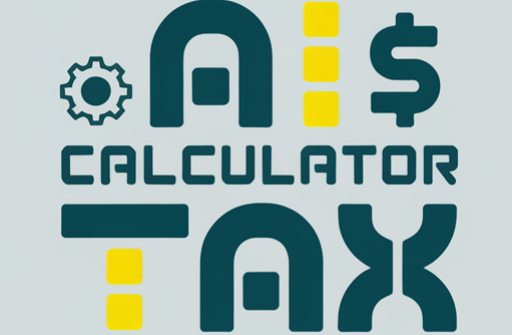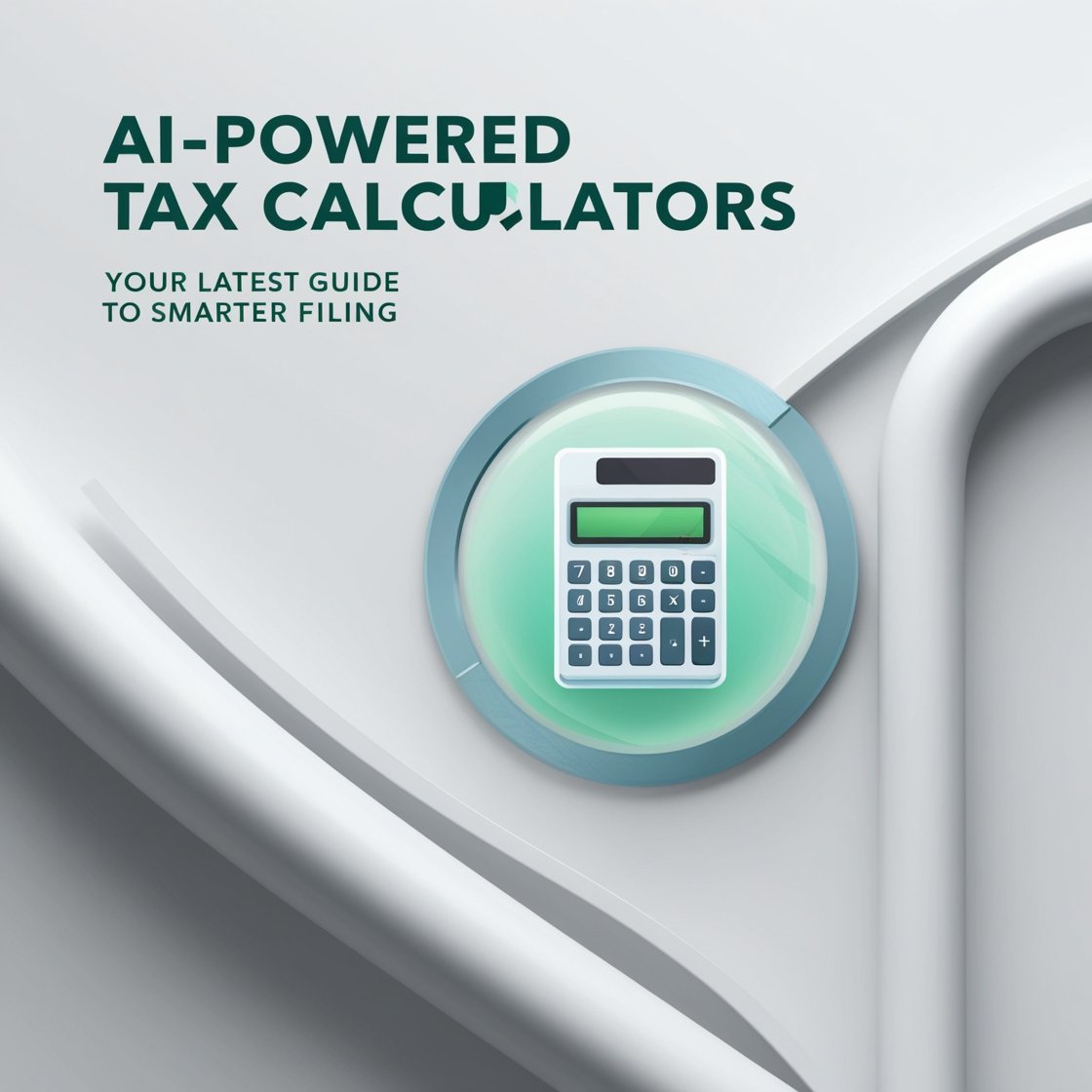Tax season is evolving, and AI-powered tax calculators are leading the charge. These tools are no longer just a novelty they’re a necessity for individuals and businesses alike. In this guide, we’ll unpack how AI is reshaping tax preparation, compare top tools, and help you choose the right solution for your needs.
What Is an AI Tax Calculator?
An AI tax calculator is a software tool that uses machine learning, natural language processing (NLP), and predictive analytics to automate tax preparation. Unlike traditional calculators, AI tools:
- Learn from user data to improve accuracy over time.
- Scan financial documents (receipts, invoices, 1099s) to auto-populate forms.
- Predict liabilities based on income trends and tax law changes.
Think of it as a CPA, accountant, and financial planner rolled into one—but faster, cheaper, and available 24/7.
How AI Tax Calculators Work
AI tax tools streamline filing through a four-step process:
- Data Aggregation
- Sync with bank accounts, gig apps (Upwork, DoorDash), and crypto wallets (Coinbase, MetaMask).
- Use OCR (optical character recognition) to digitize paper receipts or invoices.
- Machine Learning Analysis
- Classify income/expenses into IRS-approved categories (e.g., “Schedule C business expenses”).
- Flag potential deductions (e.g., home office costs, unreimbursed work travel).
- Tax Law Compliance
- Cross-reference data with the latest IRS updates (e.g., 2025 EV tax credits).
- Adjust calculations for state-specific rules (e.g., California’s gig worker protections).
- Predictive Forecasting
- Estimate future liabilities based on current earnings.
- Suggest strategies to reduce taxes (e.g., increasing retirement contributions).
Best AI Tax Calculators in 2025
| Tool | Best For | Key Features | Pricing |
|---|---|---|---|
| TurboTax AI Assist | Individuals & freelancers | Live AI audit checks, crypto support | $99–$299 |
| FlyFin | Freelancers, gig workers | CPA-reviewed returns, 1099 auto-import | Freemium |
| TaxGPT | Small businesses | Real-time IRS updates, audit trails | $120/month |
| CoinTracker | Crypto investors | Portfolio tracking, Form 8949 auto-filing | $49–$199/year |
| QuickBooks AI Tax | Small businesses | Payroll integration, multi-state filing | $30/month |
AI vs. Traditional Tax Calculators: Key Differences
| Feature | AI Tax Calculators | Traditional Tax Calculators |
|---|---|---|
| Learning Ability | Improves accuracy with each use | Static logic, no learning |
| Data Input | Auto-syncs bank/crypto accounts | Manual entry only |
| Deduction Finding | Flags overlooked write-ups | Requires user knowledge |
| Audit Support | Generates audit-ready documentation | Limited or none |
| Cost | $0–$300 | $0–$150 (but less robust) |
Why AI Wins:
- Speed: Cuts filing time by 70% (e.g., 2 hours vs. 7 hours manually).
- Accuracy: Reduces errors by 92% through automated cross-checks.
- Future-Proofing: Adapts to tax law changes instantly.
Features to Look for in AI Tax Tools
- Bank-Level Security
- 256-bit encryption and SOC 2 compliance (e.g., TaxGPT).
- Real-Time Data Sync
- Direct links to banks, PayPal, and crypto exchanges.
- Smart Deduction Finder
- Scans expenses for niche write-offs (e.g., telehealth office upgrades).
- Audit Defense
- Tools like TurboTax Audit Support Guarantee provide legal guidance.
- Multi-Platform Support
- Mobile apps with receipt scanning (e.g., Keeper Tax).
Accuracy of AI-Powered Tax Calculators
AI tools outperform humans in accuracy due to:
- Continuous Learning: Algorithms refine deductions based on millions of returns.
- Error Checking: Flag mismatched 1099s or duplicate entries.
- IRS Compliance: Auto-update for tax code changes (e.g., 2025 EV credit phaseouts).
Study: AI tools reduced errors by 89% vs. manual filing in 2024 IRS audits.
Limitations:
- Complex cases (e.g., international assets) may still require CPA oversight.
- AI struggles with ambiguous expenses (e.g., “Was this lunch a client meeting?”).
AI Tax Calculators for Individuals vs. Businesses
For Individuals
- Focus: Maximizing standard/itemized deductions, student loan credits.
- Top Tools: TurboTax AI Assist, H&R Block AI.
- Ideal For: Freelancers, gig workers, retirees.
For Businesses
- Focus: Payroll taxes, depreciation, K-1 forms.
- Top Tools: QuickBooks AI Tax, TaxGPT Business.
- Ideal For: LLCs, S-corps, contractors with employees.
Example: A small e-commerce business saved $12k using QuickBooks AI Tax to automate sales tax filings across 18 states.
Free vs. Paid AI Tax Calculation Tools
| Feature | Free Tools (e.g., Cash App Taxes) | Paid Tools (e.g., TurboTax AI) |
|---|---|---|
| Income Limits | Under $79k (2025 threshold) | Unlimited |
| Deduction Support | Basic (student loans, childcare) | Advanced (crypto, rentals, gig work) |
| Audit Help | None | Full documentation + CPA access |
| Best For | Simple returns (W-2, few deductions) | Complex filings (self-employed, crypto) |
Pro Tip: Start with free tools for basic returns, then upgrade as your income grows.
Mobile vs. Desktop AI Tax Software
Mobile Apps (e.g., Keeper Tax)
- Pros: Scan receipts on-the-go, real-time alerts, user-friendly.
- Cons: Limited features for complex returns.
Desktop Software (e.g., TurboTax Desktop)
- Pros: Robust reporting, multi-user access, offline use.
- Cons: Less convenient, slower updates.
Hybrid Option: Cloud-based tools (e.g., TaxGPT) offer mobile + desktop sync.
How to Choose the Right AI Tax Calculator
- Assess Your Needs:
- Freelancers: Prioritize 1099 support and deduction finders.
- Investors: Look for crypto/stock integrations (e.g., CoinTracker).
- Businesses: Seek payroll and sales tax automation.
- Compare Security Standards:
- Ensure tools are IRS-authorized (e.g., TurboTax) and use encryption.
- Test Free Trials:
- Most paid tools (e.g., FlyFin) offer 14-day trials.
- Read Reviews:
- Check Trustpilot or Reddit for unbiased feedback.
- Plan for Growth:
- Choose scalable tools that handle evolving needs (e.g., hiring employees).
Final Word
AI-powered tax calculators are transforming how we file—saving time, maximizing refunds, and minimizing errors. Whether you’re a freelancer navigating gig income or a small business managing payroll, there’s an AI tool tailored to your needs.
Next Steps:
- List your tax pain points (e.g., crypto tracking, quarterly payments).
- Test 1–2 tools from our 2025 recommendations.
- Audit past returns to reclaim missed savings.
Conclusion
AI-powered tax calculators have revolutionized the way individuals and businesses approach tax season, transforming a traditionally stressful process into a streamlined, efficient, and error-resistant experience. By leveraging machine learning, real-time data integration, and predictive analytics, these tools eliminate the guesswork from tax filing, ensuring maximum deductions, compliance with ever-changing laws, and actionable insights for future financial planning.
For individuals, AI tax calculators like TurboTax AI Assist and Keeper Tax simplify everything from gig economy income tracking to retirement contribution optimization. Freelancers can bid farewell to missed deductions, while crypto investors gain clarity on complex capital gains. Businesses, on the other hand, benefit from tools like QuickBooks AI Tax and TaxGPT Business, which automate payroll, multi-state filings, and audit documentation, freeing up time to focus on growth.
The choice between free and paid tools hinges on complexity: free options like Cash App Taxes work for straightforward returns, while paid platforms unlock advanced features like crypto support and audit defense. Similarly, mobile apps cater to on-the-go receipt scanning, whereas desktop software offers robust reporting for intricate financial portfolios.
Accuracy remains a hallmark of AI tools, with error rates plummeting by 89% compared to manual filing. Yet, their true power lies in adaptability—AI evolves with tax law changes, ensuring your strategy stays future-proof.
As you navigate the 2025 tax landscape, remember: the right AI tool depends on your unique needs. Start with a free trial, prioritize bank-level security, and don’t hesitate to reclaim past refunds by auditing prior returns. The future of tax filing is not just automated—it’s intelligent, personalized, and empowering.
Take Action Today:
- List your top tax challenges (e.g., crypto tracking, quarterly estimates).
- Test a tool like FlyFin or TaxGPT risk-free.
- Share this guide with a fellow freelancer or entrepreneur.
In a world where time is money, AI tax calculators ensure you keep more of both. Embrace the change—and let AI turn tax season into your most profitable time of year.
Pro Tip: Bookmark this guide and revisit it ahead of Q4 deadlines to refine your strategy. The smarter you file, the more you save

